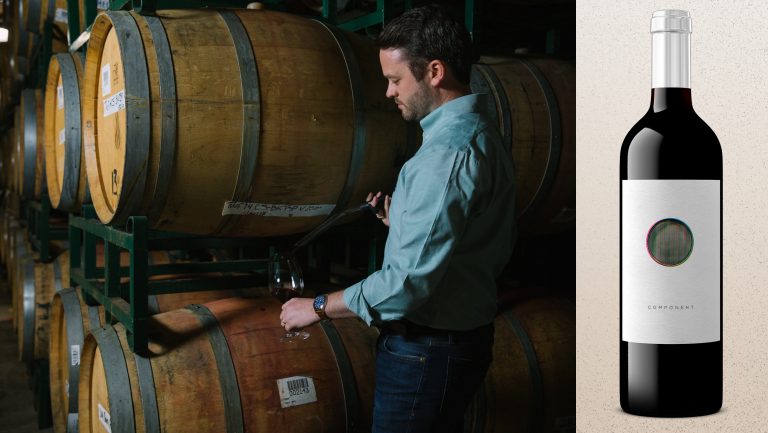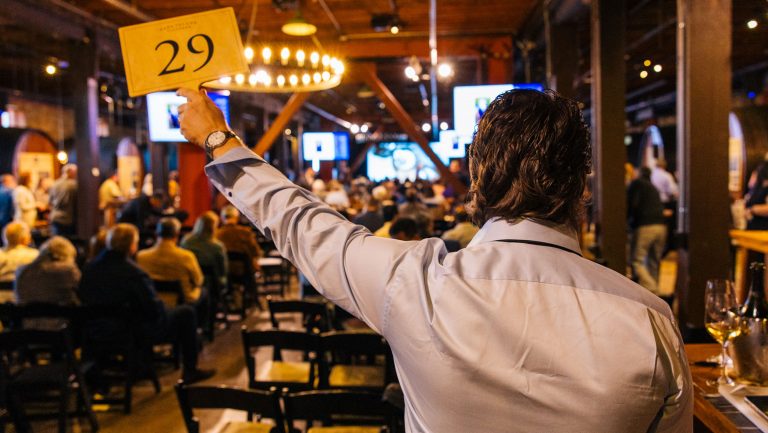Varietal or blend—that is the question. For some regions, the style is deeply entrenched: single-variety wines in Burgundy and Barolo; multiple-variety blends in the Rhône and Bordeaux. For generations, Bordeaux has been synonymous with world-class blends, cranking out bottles dominated by Cabernet Sauvignon and Merlot that have rocked wine lists, restaurant shelves, and Top 100 lists around the world. But that’s about to change: A new wave of single-variety wines are coming out of Bordeaux’s prestigious Left Bank—with a classified growth name attached, to boot.
According to Michael H. Kennedy II, the founder of Component Wine Company in Napa, California, the goal of his company is simple: bottle varietal “blending components” to expose wine drinkers to unique varieties on their own. But some doubted Kennedy’s vision. “A lot of people were telling me that I was crazy, that no one wants to drink 100 percent Petit Verdot, 100 percent Cabernet Franc,” he says. The varietal wines he produces from Napa estates hail from “really incredible, insanely iconic” winemakers, though he doesn’t reveal the exact names. “In Napa, brands are young—even ‘old brands’ are young,” Kennedy says, explaining that many winemakers have asked for anonymity since they are focused on building their own brands.
The idea for creating a component-focused wine company occurred to Kennedy when he was employed as the wine director at Blue by Eric Ripert, located in the Ritz-Carlton Grand Cayman, working under world-renowned sommelier Aldo Sohm. On a tasting trip to Napa, Kennedy began exploring varietal wines on their own, before they were made into a final blend. “I tasted a Petit Verdot in tank,” he says, “and I couldn’t believe the character and uniqueness, how incredible this wine was.” Kennedy knew that Petit Verdot wasn’t an easy wine to drink on its own, owing to its firm tannin and strong personality, but he also felt it might provide an opportunity. “There are so many people out there that love wine, that haven’t experienced this,” he says. “I wanted to expose people to that. And just like that, Component Wine Company downloaded in my mind.”

Don’t miss the latest drinks industry news and insights. Sign up for our award-winning newsletters and get insider intel, resources, and trends delivered to your inbox every week.
The Bordeaux Connection
Kennedy’s desire to create varietal wines in Bordeaux comes from the fact that professionals—and even more so, the public—rarely have the opportunity to taste these wines apart from barrel samples. However, Château Lynch-Bages, a fifth-growth Bordeaux estate in Pauillac, had recently started a partnership with Stephen Bolger, a former tech executive, to launch Viniv, an experiential wine company that allows individuals and corporations to blend custom Bordeaux wines and then purchase a barrel of wine made to their specifications.
This partnership led Kennedy to question whether Viniv would be willing to produce the wines on a larger scale, selling them as component wines. So he asked. “I didn’t even have to convince them at all,” Kennedy says. “[Bolger] said to me, ‘We taste components all the time, and there are so many times I think that the wine would be so good on its own.’ Tasting the pieces is so thrilling.”
The wines are being made at a high level, from classed-growth vineyards with high-quality fruit, crafted by Lynch-Bages’s winemakers Daniel Llose and Nicolas Labenne, alongside consulting enologist Eric Boissenot, who also works with four out of five of Bordeaux’s first-growth châteaus.
“The goal is not to get people away from blended wine,” says Kennedy. “In fact, it’s the opposite; it’s to get people to have a deeper appreciation for those wines when they do go back to them.” He feels that these varietal bottles will help consumers to further understand the aromatics of Cabernet Franc, the tannins of Petit Verdot, and the fleshy, fruit-forward structure of Merlot, just to name a few. “That’s the whole goal of what we’re doing—complementary to what’s going on,” he says. “It’ll feed people with added knowledge and experience.”
The Professional Reception
Initially, Kennedy worried that Bordeaux winemakers would pound down his door, aghast at the break with hundreds of years of tradition. But that hasn’t been the case. Bérénice Lurton, the proprietor of Château Climens in Barsac, likes the idea of creating varietal wines. “The long history of winemaking is made of this search for the right grapes at the right place,” she says. “That’s why it is so interesting to make single-variety wines from different places: It makes you both realize and feel the personality of a grape variety and its variations, which are generally much more than nuances. For wine lovers, it’s a very interesting and fun opportunity to understand and enjoy wine better.”
Stateside, Kennedy has other supporters for the concept. “This is an exciting new journey for Michael and Component, a very unique way to experience Bordeaux varietals,” says Rajat Parr, the sommelier turned winemaker at Domaine de la Côte in the Santa Rita Hills appellation of California.
Kennedy’s former colleague and mentor Aldo Sohm emphasizes this point. “I find it exciting when young people branch out with their ventures and want to learn more,” he says. “It could be very interesting for us to taste varietal-specific Bordeaux wines.”
Component’s varietal Bordeaux wines will be bottled this summer and released to the market in the fall. To start, varietal Cabernet Franc, Cabernet Sauvignon, and Merlot will be produced from single vineyards in the Left Bank. “I feel that these three varieties are the most important, anchor wines in the Bordeaux blend,” explains Kennedy, noting that six red varieties are permitted in the regional blends by law. “I think Petit Verdot would be interesting, but it’d need at least a decade before anyone could drink it.”
With regards to labeling, the Bordeaux wines will adhere to appellation guidelines and will be labeled as Grand Vin de Bordeaux, with the Bordeaux AOC as the lowest designation. The varietal Cabernet Sauvignon will be labeled as Pauillac, however, as fruit from other well-regarded appellations will be moved to the Viniv facility in Pauillac. Other bottles will be designated as Médoc or Bordeaux.
The wines will be directly imported to Component Wine’s Napa facility and offered to the company’s direct mailing list, as well as in limited quantities at on- and off-premise accounts in New York, North Carolina, Georgia, Michigan, California, Illinois, and the D.C. area. Pricing will vary from year to year, though bottles will generally retail for more than $100. Kennedy notes that pricing will be similar to classed-growth Bordeaux, explaining that sommeliers and retailers will be able to offer their customers a wine of equal quality, but a “completely different experience.”
Correction: An earlier version of this article implied that Component wines would be made at Lynch-Bages facility in Pauillac. They will be made at an adjacent facility owned by Viniv.

Dispatch
Sign up for our award-winning newsletter
Don’t miss the latest drinks industry news and insights—delivered to your inbox every week.
Vicki Denig is a wine, spirits, and travel journalist based between New York and Paris. Her work regularly appears in Decanter, WineSearcher, Food & Wine, and more. She also works as a content creator / social media manager for a list of prestigious clients, including Beaupierre Wine & Spirits, Corkbuzz, Veritas Imports, and Crurated.







